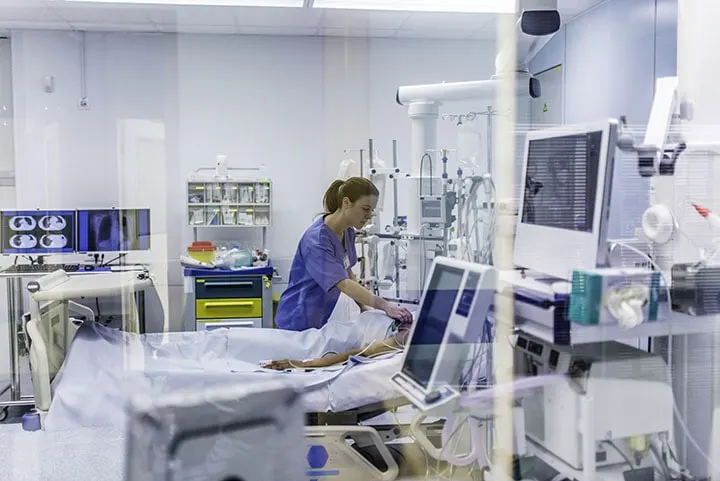Tips for Preventing Infection During Mechanical Ventilation

For patients that are struggling to breathe on their own, mechanical ventilation can be a literal lifesaver. However, there are risks—some common, some rare—that are associated with ventilators. The most common of these risks is ventilator-associated pneumonia (VAP), a lung infection that can occur 48 hours or more after a patient has been intubated and placed on a ventilator. Despite being an extremely common nosocomial disease, VAP is also preventable. In this guide, we'll go over some tips for preventing infection during mechanical ventilation.
Disinfect Equipment (and Hands)
VAP occurs when bacteria from the ventilation system invade a patient's lungs. To reduce the likelihood of VAP, it is crucial to disinfect resuscitation bags, spirometers, oxygen analyzers, and other parts of the ventilator prior to use.
It's important to have sterilized equipment, but it's also important to have clean and jewelry-free hands. Every clinician that comes into contact with the patient or equipment needs to practice excellent hand hygiene. This will prevent the spread of harmful germs and bacteria. A combination of soap, water, and alcohol-based hand rubs should eliminate most microorganisms. Removing watches, rings, and other forms of hand jewelry will also lower the risk of transmitting bacteria and other pathogens to the patient.
Use Antibiotics on the ET Tubes
Biofilms are an extremely common occurrence during mechanical ventilation. They form rapidly following intubation and can cause a number of complications in critically ill patients, including VAP. A tip for preventing infection during mechanical ventilation is to use antimicrobial coatings on the ET tubes. Coating the surface of the endotracheal tubes with topical antibiotics can prevent these microbial biofilms from forming.
Rely on Closed Suctioning Systems
Closed suctioning systems, such as subglottic suctioning devices, can be used to remove contaminated secretions in the trachea without needing to remove the patient from mechanical ventilation. This method has been shown to be an effective strategy for preventing VAP and other common ventilation risks, such as hypoxia, hypotension, arrhythmias, and other forms of bacterial contamination.
As a healthcare provider, you’re dedicated to keeping your patients healthy and safe. Med One Group carries state-of-the-art respiratory equipment that will help you provide optimal care. Check out our inventory of medical equipment today!
